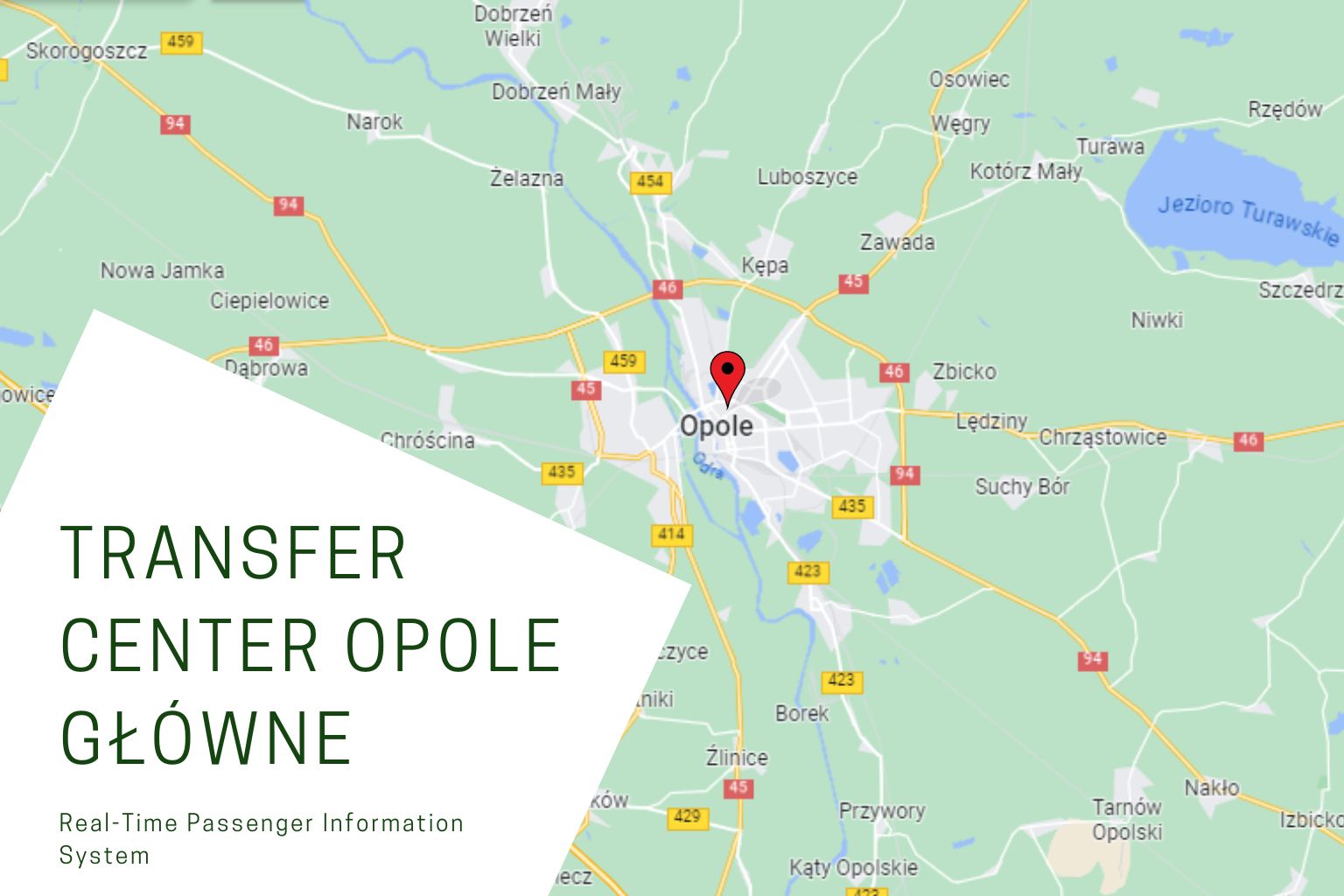PASSENGER INFORMATION SYSTEM FOR OPOLE GŁÓWNE TRANSFER CENTER

The main tasks of Company X included the production, delivery, installation, and configuration of:
- 8 station information boards presenting detailed departure data for buses from each platform,
- 3 summary boards displaying the departure schedule of the 11 nearest buses,
- 4 small, infokiosks, interactive devices displaying timetables.
All devices of the passenger information system are made in TFT LCD technology.
In addition, the company provided a server with passenger information system software for long-distance vehicles and enabled the display of data from PIDS of the Municipal Transport Company in Opole.
Construction of Transfer Center Opole Główne
The Transfer Center was constructed in the heart of the city, near the Opole Gówne train station. This modern building, with a total area of 13,500 square meters, was designed to combine multiple functions in one place. In the ground floor there is a spacious bus station with eight platforms, ticket offices, service facilities, and offices. Over 300 parking spaces were designated on the remaining three levels.
In order to meet the needs of the community, the project included play areas for families with children located in the waiting room and elevators for people with disabilities. The building’s rooftop has green terraces with a flower meadow, and the facade is decorated with vertical gardens, adding a unique character to the object.
Comfort and high quality of public transportation
The construction of the Transfer Center in Opole aligns with the Plan For Low-Emission Economy For The City Of Opole, which aims to increase the quality of life for residents and improve the air condition of the Opole Agglomeration by implementing actions for sustainable urban mobility, including public transport.
According to the plan, construction of transfer centers near railway stations, providing parking opportunities nearby and improving stop infrastructure, have a positive impact on changing the attitude of residents to using public transport.


